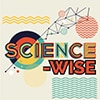Going where its predecessor went in 2019, Chandrayaan-3 will target a relatively unexplored site near the south pole of the moon — a perpetually dark region of soaring mountains and deep craters. It is here that scientists hope to find water-ice locked in its perennial cold sub-surface.
“It is predicted that there could be water locked in the form of sub-surface ice here. These are theories. Nobody has gone there to dig it yet. So, we will do the elemental analysis and try to find out if there is presence of more concentration of water,” ISRO chief S Somanath had earlier told News18.
Water is a critical resource for any deep-space mission. More so, when countries are racing to establish a permanent human presence on the moon over the next decade. In 2008, Chandrayaan-1 gave evidence of water on the sun-lit surface of the moon. But scientists are still trying to find out how much water and in what form it is actually trapped.
SEARCH FOR CRITICAL RESOURCES
Post a successful landing, the lander and rover will begin a series of experiments to fathom what has intrigued scientists for years — the lunar atmosphere and its complex regolith (soil) which traps critical elements like Magnesium, Aluminum, Potassium, Iron and Silica. With no air or wind, the moon has preserved its fascinating history for billions of years which scientists are keen to explore.
Its thin and weak atmosphere, unlike that of Earth, consists of unusual gases which get ionized and change with day and night. The mission will try to gather more data on its unique composition especially near the relatively cooler south pole — that countries like the US and China have their eyes on.
The lander will also insert a probe about 10cm into the uneven lunar soil (regolith) to investigate what it’s actually made of. It will go deeper and pass an electric current to measure the surface’s thermal and electrical properties. It will also drop an instrument on the surface to unravel the earthquake tendencies on the moon through the vibrations it will produce.
Powered by sunlight, the 28kg rover coming out of the lander will move across the surface studying the lunar soil and rocks around the landing site. It will use lasers to break down the chemical structure — melting it and creating emissions — to study its unique compositions. The findings could pave the way for future mining of lunar resources and key life-sustaining element for astronauts and fuel for their spacecraft.
LUNAR ECONOMY
A successful landing will certainly bring India into the elite club of space-faring nations. But for India to claim its share in the upcoming lunar economy, it will have to offer more in terms of its deep-space capabilities as the world is racing to the moon.
The three space powers to have successfully landed on the moon — the US, China and the Soviet Union — are now eyeing a permanent presence on the moon. The plan is to build a lunar base which will double up as a space gateway for astronauts to explore Mars — the next big destination.
NASA will take its astronauts back to the moon in 2025 under its Artemis Program, while Russia and China joined hands to set up the International Lunar Research Station and take crewed missions. China’s Chang’e-5 completed its journey to the moon and returned to Earth in 24 days with rock samples which are now being studied. European Space Agency (ESA) and Japan are next in line. The UAE and Israel failed in their moon landing attempt.
A successful Chandrayaan-3 will give impetus to India’s deep space missions in future. With demonstrated skill and ability to land on the moon, it can plan its future missions with astronauts. The ISRO chairman has already indicated the space agency’s plans of collaborating with Japan for its first moon landing. While Japan will develop the lander, ISRO will work on the scientific objectives of the mission.



